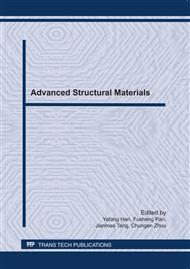p.276
p.280
p.287
p.292
p.300
p.305
p.310
p.316
p.319
Research on Heat Transfer during LFEC Processing by In Situ Temperature Measurement
Abstract:
Low-frequency electromagnetic casting (LFEC) processing could improve not only the metallurgical quality of magnesium billet including refining grain size, reducing regional microstructural difference and lightening segregation, but also its surface quality due to the effect of applied electromagnetic field according to the results by microstructure observation and the numerical simulation. In this research in-situ temperature measurement was carried out in LFEC processing in order to investigate heat transfer behavior of billet during solidification. The effects of the electromagnetic conditions (frequency and the intensity) together with the casting temperature on the sump and the mushy zone were investigated in detail. The results indicate that all the casting conditions affect the temperature field of magnesium billet markedly during solidification. Electromagnetic field could decrease not only the sump depth but also the difference of regional temperature field along the solidification direction leading to much more uniform cooling rate.
Info:
Periodical:
Pages:
300-304
Citation:
Online since:
June 2011
Authors:
Price:
Сopyright:
© 2011 Trans Tech Publications Ltd. All Rights Reserved
Share:
Citation:


